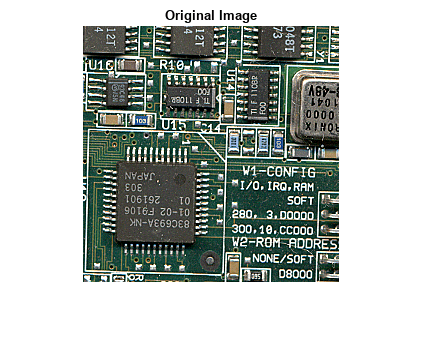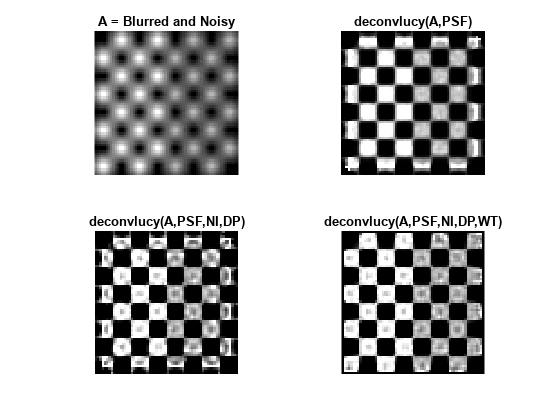deconvlucy
ルーシー・リチャードソン アルゴリズムを使用したイメージのブレ除去
構文
説明
例
入力引数
出力引数
ヒント
deconvlucyを使用すると、逆畳み込みを前回停止した箇所から再開できます。この機能を使用するには、入力イメージIを cell 配列{I}として渡します。これを行う場合、関数deconvlucyは、出力イメージJを cell 配列として返します。これを次に呼び出すdeconvlucyに入力配列として渡すことができます。出力 cell 配列Jには次の 4 つの要素が含まれています。J{1}は元のイメージIを格納します。J{2}は最後の反復の結果を格納します。J{3}は最後から 2 番目の反復の結果を格納します。J{4}は反復アルゴリズムによって生成される配列です。出力イメージ
Jは、アルゴリズムで使用されている離散フーリエ変換に起因するリンギングを示すことがあります。リンギングを軽減するには、deconvlucyを呼び出す前にI = edgetaper(I,psf)を使用してください。deconvlucyは、PSF を正規化しないでdoubleに変換します。deconvlucyは、出力イメージが入力イメージの範囲外の領域に入る場合にも値を返すことができます。
参照
[1] D. S. C. Biggs and M. Andrews, Acceleration of iterative image restoration algorithms, Applied Optics, Vol. 36, No. 8, 1997.
[2] R. J. Hanisch, R. L. White, and R. L. Gilliland, Deconvolutions of Hubble Space Telescope Images and Spectra, Deconvolution of Images and Spectra, Ed. P.A. Jansson, 2nd ed., Academic Press, CA, 1997.



